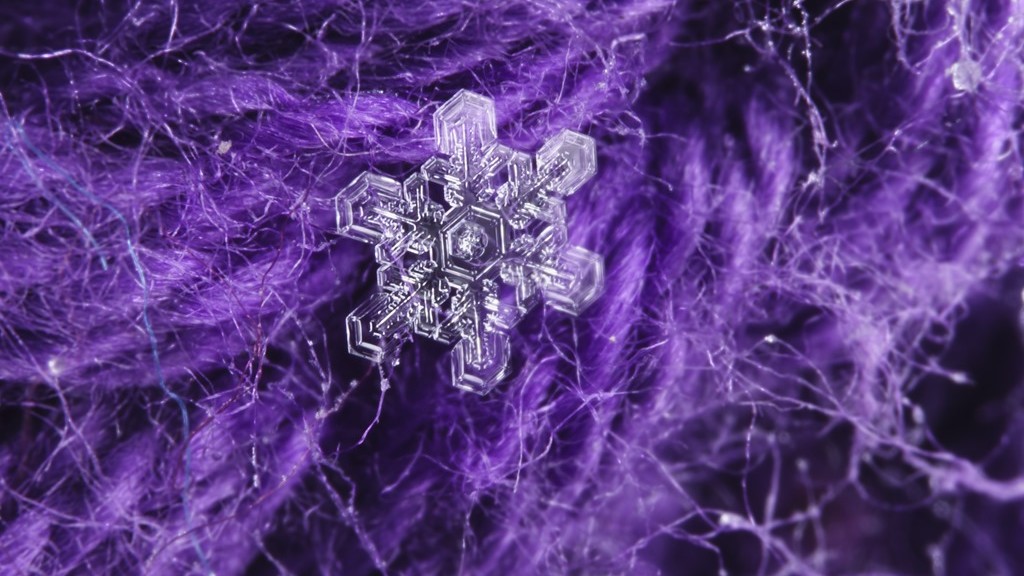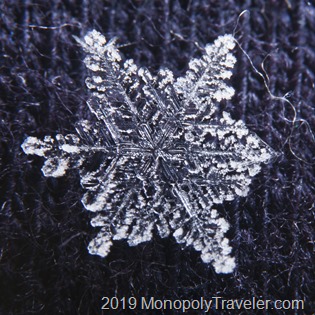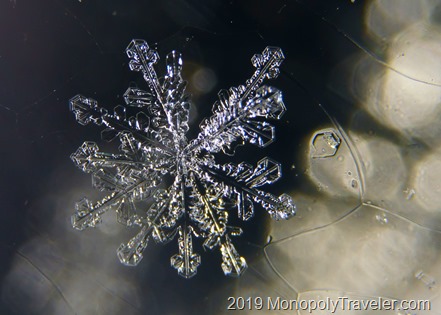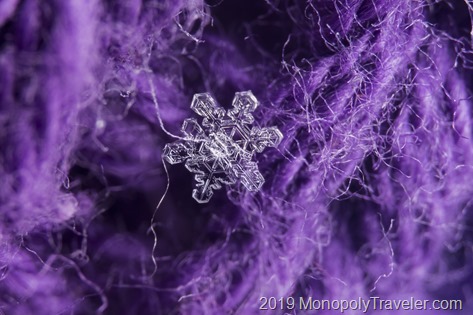As the snow really started to pile up in February there were several opportunities to examine these little ice crystals and become mesmerized by their unique shapes and patterns. Often times I would be concentrating on things I needed to get done, one of which was shoveling all of this fresh snow, and if I took just a moment to look at a few snowflakes I was distracted for hours. I would drag out the camera and shoot away trying to capture each little detail of each flake among the never ending supply falling from the sky. Eventually the cold and the clock would end my session forcing me to wait until the next snowfall.
Once getting them on a computer I could examine each one even closer and study how they formed. What conditions were needed to create these? Were the conditions changing while a snowflake was being made? When multiple snowflakes landed together were they connected or just collided in the sky before settling down on my surface? I was constantly amazed at how different snowflakes look depending on what the temperature was outside.
Even within the same snowfall the snowflakes would change in appearance multiple times. Sometimes they would be large, branched crystals with ice drops frozen on the edges while other times they would be clear with amazing patterns and at different times they would be fairly non descript pieces of ice. In most forms they are fascinating to look at up close and very challenging to photograph because of their typically small size. Trying to get the entire snowflake in focus is often extremely difficult, if not impossible, unless the snowflake and camera are completely parallel to one another. Still, most of the time, they can be looked at in fine detail and their patterns can be interpreted.
One of the challenges with snowflakes is trying to figure out if there is just one or if there are multiple snowflakes stacked on each other. Which layer is currently in focus? A slight adjustment in focus can be the difference in seeing the snowflakes detail or having it be slightly blurry. Once everything appears sharp than keeping the camera and snowflake perfectly still is required. Hopefully the wind does not blow while taking the picture. All of this needs to be done outside in order to keep the ice from melting and losing any of its detail. While snowflakes are a challenging subject, the results are often worth the effort for each one. Usually over the course of an hour I can photograph four different snowflakes so it is not a quick process.






